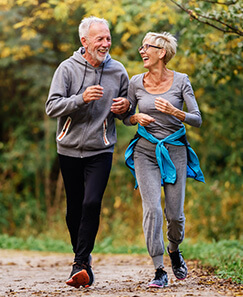We all, at some point in our lives, have dealt with constipation — whether it’s acute or chronic. This is not a pleasant experience. Constipation occurs when the colon absorbs too much water or when the colon’s muscle contraction is slow or sluggish, delaying transit time. The result is hard and dry stool, which can lead to straining and pain when having a bowel movement. How can physical therapy help?
Did you know…
- 4 million Americans have frequent constipation
- It is the most common GI complaint
- Accounts for 5 million physician visits per year
- $725 million spent on OTC laxatives per year
There are 2 types of constipation: Idiopathic and functional. Idiopathic constipation is unresponsive to standard treatment and further medical workup is needed to determine if there are problems with hormones, nerves, and/or muscles. Functional constipation is when the colon itself is healthy, but not working properly. With this type of constipation, there is no organic disease, it can be attributed to lifestyle or poor dietary habits, and it occurs in all age groups, but most commonly in women.
Common causes of constipation include, but are not limited to lack of fiber, lack of physical activity, dehydration, certain medications (i.e. narcotics, calcium channel blockers, diuretics, iron supplements, antacids, antihistamines, etc.), milk, cheese, gluten, colorectal problems, and intestinal dysfunction.
Fiber intake is a big deal in preventing constipation. The target intake for fiber is 35 grams per day, as recommended by the Surgeon General. Most of us only consume 14-15 grams of fiber according to the Harvard School of Public Health. We also need to make sure we hydrate well throughout the day. The recommended amount of water intake is half your body weight in ounces. For example, if a person weighs 150 lbs., they should be consuming at least 75 ounces of water. More water is needed when you add caffeinated, carbonated, or acidic foods/drinks to your diet and/or if you are doing strenuous activities. Physical activity and exercise helps and increases muscle activity in your intestines and with peristalsis (wavelike movements that push the contents of the digestive tract forward) that allows for proper transit in the colon. Don’t ignore the urge to have a bowel movement. Take your time in the bathroom, allowing yourself enough time to have a bowel movement without distractions and without feeling rushed. You don’t want to strain or bear down when having a bowel movement, as this can cause other dysfunctions, including pelvic organ or rectal prolapses.
Another method of reducing constipation for people is the use of laxatives (fiber supplements, stimulants, osmotics, lubricants, and stool softeners). However, we urge that laxatives not be part of your daily routine. Overuse of certain laxatives can lead to dependency and decreased bowel function.
How can Pelvic Floor Physical Therapy help with constipation? Our PTs can utilize biofeedback training –the use of devices to help you learn to relax and tighten the muscles in your pelvis. Relaxing your pelvic floor muscles at the right time during defecation can help you pass stool more easily. We commonly evaluate and treat individuals with urinary or fecal incontinence. We can also help patients that suffer from other colorectal dysfunctions, such as constipation, coccydynia, painful defecation, hemorrhoids, post-cancer or post-surgical pain, and interstitial cystitis. By combining orthopedic/manual therapy skills; coordination and strength training; education regarding bowel/bladder habits, dietary habits (i.e. fiber and fluid intake), and sensation re-training; our team can help male and female patients feel more like themselves again.
Contact us for any questions you may have. We are here to help.
Start your journey to pain-free living today.
Our experts are committed to providing effective, efficient, and compassionate care to help you live a pain-free, active life. Our passion is to help every patient reach their goals on their journey to recovery and optimal performance.


